Rules for caring for Kalanchoe at home
The ease of caring for Kalanchoe at home and its beneficial properties are the main reasons for the high popularity of this plant. In terms of prevalence, it is second only to aloe. For some people, Kalanchoe is a home remedy for a variety of ailments, while for others it is interior decoration. This is not surprising, since this representative of the succulent genus from the Tolstyanka family has more than 200 species, strikingly different in both external characteristics and properties. They have one thing in common - a dense sheet plate. Moisture accumulates in it, as well as in the stem, which allows the plant to successfully survive even a very long drought.
Popular types
The types and names of Kalanchoe varieties are in the hundreds. The following are usually grown at home:
- Blossfeld;
- Kalandiva;
- Rosaline;
- Mangin;
- Degremona;
- Dissected;
- Cirrus.
Lush bright inflorescences in a barely noticeable dark green rosette of leaves - this is how Blossfeld's Kalanchoe can be described. This native of the island of Madagascar is represented by a wide variety of varieties obtained in the course of painstaking breeding work on the domestication of the plant. Blossfeld's Kalanchoe will please with flowering about 6 weeks a year, then it will enter a dormant phase.
At the beginning of the XXI century, by mutation from Blossfeld's Kalanchoe, varieties were obtained in which each flower has not 4 petals, characteristic of all Kalanchoe, but as many as 30. Each inflorescence is a compact bouquet of mini-roses blooming for about 2.5 months ... The color of flowers covers a wide palette, there are even two-tone options. This variety was named "Kalandiva".
Another variation based on Blossfeld's Kalanchoe is the Rosalina variety. The bush is more compact than that of Kalandiva, soft tones prevail in the color of the flowers.
The ampelous variety of Kalanchoe - Mangina (Mangini) - is difficult to confuse with others. The bush, framed by racemose inflorescences of drooping bells, looks especially good in a hanging planter. The shoots of the plant are flexible, hanging, covered with lanceolate leaves.
The dissected Kalanchoe (lobular, dissected-leaved, toothed, "deer horns") is distinguished by original openwork leaves, which droop as they grow older. Once a year, the bush throws out an inflorescence of yellow flowers with four petals, but the decorative properties of this variety are precisely in its leaves.
Medicinal species
Not all types of Kalanchoe have pronounced healing properties. The recognized "home doctors" are two: the Kalanchoe Degremona (daigremontianum) and the pinnata (pinnata). However, only shoots and leaves of Kalanchoe pinnate are registered as medicinal raw materials. In the late 60s, this plant was officially recognized as medicinal and is recommended (for example, by ENT doctors) as an adjunct to the main course of therapy.
Some sources confuse these types or combine them, without taking into account significant differences. The pinnate Kalanchoe has rounded fleshy leaves with slightly wavy edges. Forms a bush of several stems, the inflorescences are bright scarlet, in shape similar to the flowers of the dissected Kalanchoe.
Kalanchoe Degremona is an original plant, the "children" of which are born and develop along the edges of the toothed leaves. This feature is even described in one of the poems of the famous German poet, for which the species was named "Goethe's flower". But the owners of the Kalanchoe Degremona periodically crumbling "kids" cause a lot of trouble with cleaning.In addition, they are actively rooting in neighboring pots, therefore, if they are not removed in time, some indoor plants may thus "outlive".
In a number of scientific works by foreign authors, there are references to the toxic effect of Kalanchoe Degremon on cattle and chickens (the effect of cardiac glycosides). When people use this plant, no side effects have been identified, but pharmaceutical preparations for ophthalmology, surgery, gynecology are made exclusively on the basis of Kalanchoe pinnate.
Main medicinal properties:
- bactericidal;
- anti-inflammatory;
- immunomodulatory;
- adaptogenic;
- antiviral.
In both types of Kalanchoe, the set of useful properties is approximately the same, but in the pinnate they are more pronounced. Juice and alcoholic tinctures are used to treat sinusitis, rhinitis, otitis media, boils, tonsillitis.
Advice
Young children should not instill Kalanchoe juice into their nose without a doctor's approval.
Care
Kalanchoe is a succulent. This means that the plant is not only able to survive in severe drought conditions, but also does not like too frequent and abundant watering. It's not scary if the earthy lump dries up. It is much worse if the roots rot or a fungus forms. In summer, Kalanchoe needs to be watered when the top layer of the soil dries up, and in winter it is enough once a week (if the window sill is not too heated by a heating radiator).
As for lighting, the Kalanchoe does not like direct "baking" sun rays, preferring a light partial shade. In the spring, the plant can be placed on the western or eastern windows, and in the winter it will be comfortable on the southern ones. Good lighting is essential during flowering.
Kalanchoe does not like acidic soils. This is one of the reasons why the bush does not grow and is constantly sick. The same result can be obtained by planting it in a container that is too large. Growth suppression is also caused by an insufficient volume of dishes - then a transplant will be required, but not during flowering.
The pot for the Kalanchoe needs a small one - 0.7-1 l with a diameter of 15-18 cm is enough. 1-2 cm of drainage must be placed on the bottom so that the roots do not rot. It is better to purchase soil, ready-made, assembled specifically for succulents.
Optimal soil composition:
- 4 pieces of leafy land;
- 2 parts of sod land;
- part of the peat;
- part of the sand.
You can fertilize the plant with complex additives for succulents about once every 2-3 weeks. In this case, it is advisable to reduce the recommended dosage by a third. It is important to observe the reaction of the Kalanchoe: if the leaves begin to curl, bend or turn yellow, then the feeding is stopped.
How to care for preservation of decorativeness?
Many species of Kalanchoe tend to lose their decorative qualities over time, so these plants need to be rejuvenated about once every 2 years. The term is conditional, since much depends on the species and the environment. For example, the Kalanchoe Degremona grows up rather quickly, shedding the lower leaves. As a result, after a year or two, a dull spectacle is obtained: a crooked bare stem, crowned with several leaves, and a lot of "kids" scattered around. Bushy Kalanchoe species lose their decorative effect in the same way.
It is quite easy to return this plant to its former beauty and health, since it is surprisingly tenacious. You need to cut off the top and root it by burying the stalk in moist soil. The stalk will quickly take root and begin to grow. In a number of sources, it is recommended to pre-dry the cut for several hours.
This is how, in general, the reproduction of all types of Kalanchoe occurs. You can grow an adult specimen in a few months. You can also propagate the plant with a leaf, digging it into moist soil and covering it with a jar to preserve the environment.
Advice
It is better to root the Kalanchoe in wet sand or soil, since the long-term presence of the cuttings in water can provoke a bacterial disease.
It is advisable to carry out all procedures in the spring, and in July, in bushy varieties, it is recommended to pinch the top (after the fourth pair of leaves). This will stimulate the growth of new shoots, adding volume to the plant.
How to achieve flowering?
Each type of Kalanchoe blooms - regardless of whether it is decorative or medicinal. It happens that a plant bought in a store quickly disappoints its owners, stopping flowering. Many begin to feed the bush, rearrange it, but all manipulations are ineffectual.
The fact is that the Kalanchoe obeys certain rhythms. When flowering ends, it needs a dormant period, during which it is important to create suitable conditions: dried inflorescences are removed, and the bush itself is transferred for about a month or two to a cooler place (for example, to a darkened window), watering is minimized. To make the Kalanchoe bloom after rest, the daylight hours are artificially reduced: the plant is in the light for 8-10 hours, then it is covered (you can use a box). This stimulates the laying of buds, and after about a month or two, flowering will resume.
Advice
In a pot that is too voluminous, the Kalanchoe will grow leaf mass instead of flowering.
Why leaves turn yellow and dry: diseases and pests
Kalanchoe is an extremely unpretentious plant, but some diseases and pests catch up with it. As a result, decorativeness is lost, the leaves dry and fall off.
The main problem is fungal and viral lesions.
- Ring spot virus. Blurred outlines of circles appear on the leaves, which subsequently clearly appear. The leaf plate coarsens and dries up. It is impossible to cope with the misfortune, the plant will have to be thrown away, and together with the soil.
- Abnormal growth. The disease is also caused by a virus. Main manifestations: young leaves brighten, old ones become deformed. There is no cure.
- Powdery mildew. A fungus called Oidium kalanchoeae Lut coats the leaves of the Kalanchoe with a grayish fluffy bloom, which causes the plant to dry out and die. The pathogen is transmitted through soil and air. Favorable conditions for development - high temperature and low air humidity. The plant can be saved by several treatments with "Fundazol" or "Topaz".
- Gray rot. It develops in conditions of high humidity of both air and soil. A gray weeping bloom forms on the leaves and stems, the affected parts die off. Against the pathogen (fungus Botrytis cinerea Pers), the drugs Fundazol or Rovral are effective.
- Late blight. This fungal disease affects not only garden crops, but also home plants. On the Kalanchoe, the attack manifests itself in the form of dark (sometimes with a purple tint) spots on the leaves and stems. The affected tissues dry out quickly. The main provocateurs of the development of the disease are high humidity and stagnant air. As soon as possible, it is necessary to treat the Kalanchoe and the soil with one of the following preparations: Profit Gold, Ridomil, Previkur.
Kalanchoe is attacked by harmful insects much less often than fungal diseases. Typically, culprit can be found on the back of the leaf or on the stems.
The following pests are most common.
- Ticks. Tiny auburn, white, red or black dots on the leaves are pest colonies that suck out the sap of the plant. The sheet plate is covered with punctures that merge into spots. Treatment with Actellik or Agrovertin will help to get rid of ticks.
- Aphid. This insect is activated in the spring, it can get on the Kalanchoe through the window. The entire colony can be easily washed off with soapy water. For this, tar, household or special potash soap is used. Thus, the plant is not only freed from the sticky secretions left by the aphids, but also protected by the film formed after drying.
- Shield. This insect can be identified by small rounded brown growths appearing on the leaves and stems of the Kalanchoe. The shell protects the scale insect from harmful influences, therefore, to enhance the effect of insecticides ("Actellik", "Phosbecid"), the affected parts of the plant are pretreated with an alcohol solution (a cloth moistened with alcohol or vodka). If attempts to exterminate the pest have not been successful, then it makes sense to choose and cut off the cleanest shoots (in order to propagate again), and discard the plant itself.
- Mealybug. You can find these insects by a light waxy bloom on the veins and petioles of leaf plates, as well as by cotton-like lumps (these are clutches with eggs). The worms themselves are usually light gray, hairy, and move quite quickly. Only the larvae that adhere to the leaf are immobile. The most effective preventive measure is plant hygiene (regular cleaning of leaves from dust, spraying). In case of severe damage, the Kalanchoe is treated with Karbofos, Inta-vir, and Decis.
- Thrips. When infested by this pest, black or dark brown elongated moving insects (usually about 1-2 mm long) appear on the plant. Some species are difficult to distinguish with the naked eye, but the result of their activity is obvious: discolored areas devoid of cell sap appear on the leaves of the Kalanchoe. White or gray larvae are found on the underside of the leaf plate. Thrips are difficult to remove, so several treatments with insecticides may be required (use "Actellik", "Karbofos", "Fitoverm", "Confidor").
Often, the owners of Kalanchoe (especially the pinnate) notice that extensive areas of depressed points are formed on the leaves. Chemical treatments are ineffective. A similar phenomenon is called dropsy of the leaf, it can occur due to excessive watering and drafts. The situation is rectified by rearranging the plant to a warmer place and limiting watering.
It happens that the lower leaves of the Kalanchoe begin to massively turn yellow and fall off for no apparent reason. This signals that the plant is cold, the soil is waterlogged or lacks nitrogen. If the tops of the stems stretch up, and the leaves on them are small and light, then more light is required. The Kalanchoe can shed a few lower leaves after transplanting. This is a natural response to stress.
Diseases and pests of the Kalanchoe rarely cause trouble to its owners. Basically, regular rejuvenation of the bush and basic care is all that a plant needs to delight with luscious greenery and bright flower caps. Any variety can be quickly grown and propagated.
Of all the species, only Kalanchoe pinnate combines both decorative qualities and useful properties. If you start this plant in the house, then all year round there will be a remedy for a number of diseases at hand, and in early spring you can enjoy flowering.
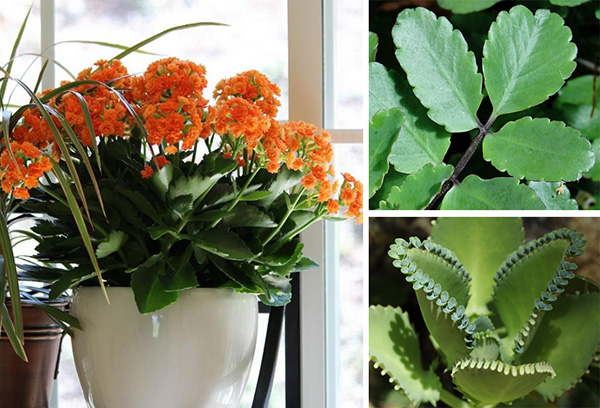
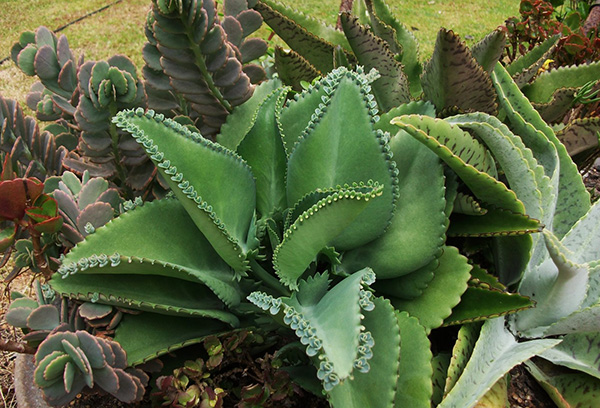
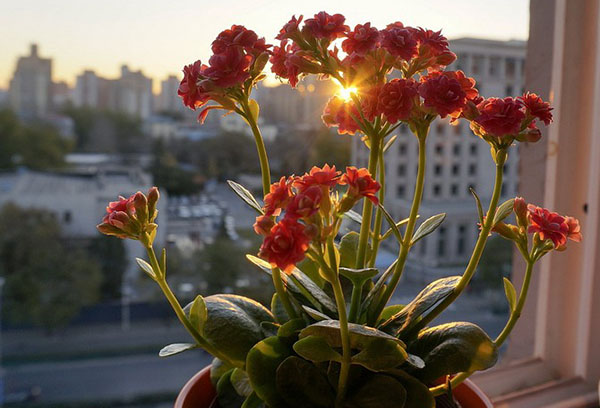
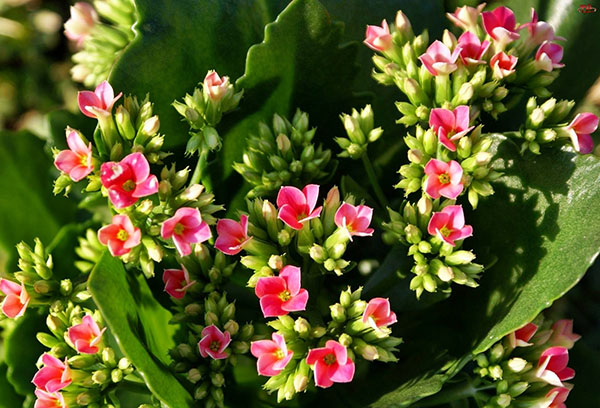
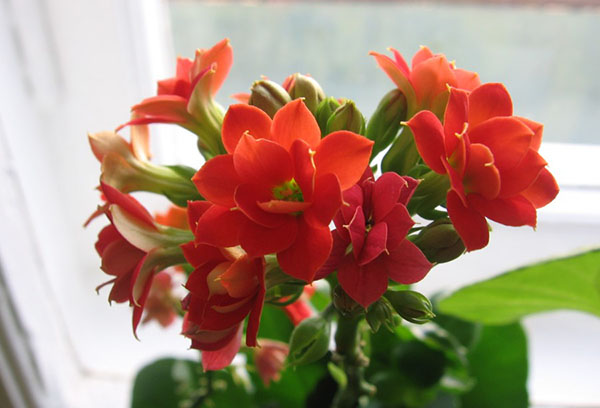
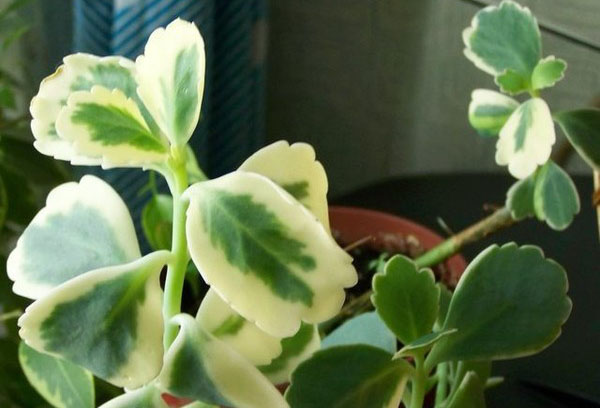
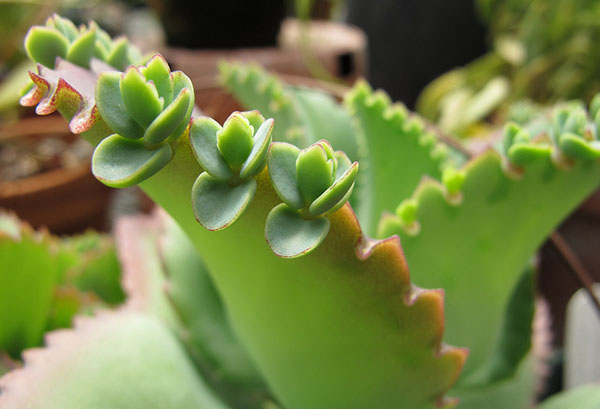
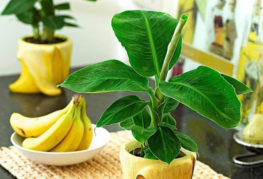
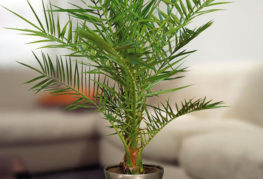
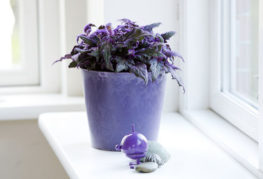
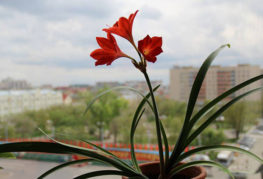
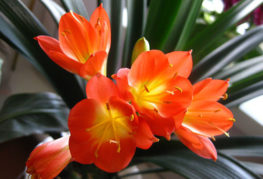
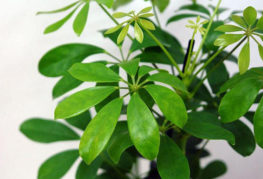
and will be published shortly.